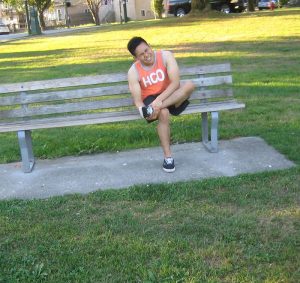Ingrown toenails can be a sore condition affecting the toes. It happens when the sharp corner or edge of the toenail pierces into the skin at the end or on the borders of the toe.
Discomfort and inflammation immediately happens when the nails curls into the skin. The inflamed area starts to grow extra tissue and drains a yellowish fluid. An ingrown toenail that is not properly treated can become infected or even form an abscess that needs surgery. Adults and adolescents are more susceptible to develop this condition and less in children and infants. Any nail can become ingrown, but it usually affects the big toe.
Causes of ingrown toenails

- Wearing tight-fitting shoes or high heel compresses the toes together and pressures the nail in growing abnormally.
- Improper trimming of the toenails which causes the corners of nail to dig into the skin. Trim nails straight across, not rounded.
- Fungal infection of the nail can result to development of a thickened or widened toenail.
- Toenail injury such as stubbing the toe, dropping something heavy on the foot and kicking a ball repeatedly.
- Poor posture
- Improper foot hygiene
- Genetic predisposition
Symptoms
- Redness, pain and swelling of the margins of the affected area.
- The area is warm to the touch
- Pain when pressure is placed on the toe
- Extra skin and tissue grows around the sharp end of the nail and a yellowish fluid drains from the area.
- If an infection develops, swelling becomes severe and a white or yellow colored drainage or pus from the affected area.
- A light-colored part of the skin is surrounded by a red skin and fever can develop.
- Bleeding
Treatment
- Soak the foot in warm water at least 15-20 minutes 4 times every day. Avoid adding soap, salt or antibacterial agents to the water. Another alternative is mixing a tablespoon of Epsom salt to the warm water. Mix equal amounts of apple cider vinegar and water is also good for the condition.
- After soaking the affected area, elevate the edge of the nail from the nail bed. Using a tweezer, gently lift the corner of the nail that is growing inward and put a small rolled gauze between the nail and the skin. Change the gauze every day. It takes about 2 weeks for the nail to grow sufficiently and prevent it from digging into the nail bed.
- Wash the foot especially the affected area at least 2 times every day using soap and water. Keep the foot clean and dry throughout the day.
- Avoid wearing high heels or ill-fitting shoes. Wear sandals until the condition totally heals.
- Take the prescribed pain medication such as acetaminophen or ibuprofen to lessen the pain and swelling.
Disclaimer / More Information
The material posted on this page on ingrown toenails is for learning purposes only. Learn to recognize and manage wounds by ingrown toenails by taking a first aid and CPR class with one of our training providers.
